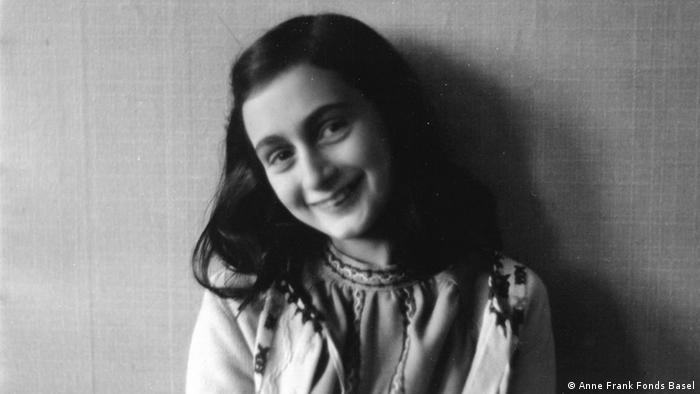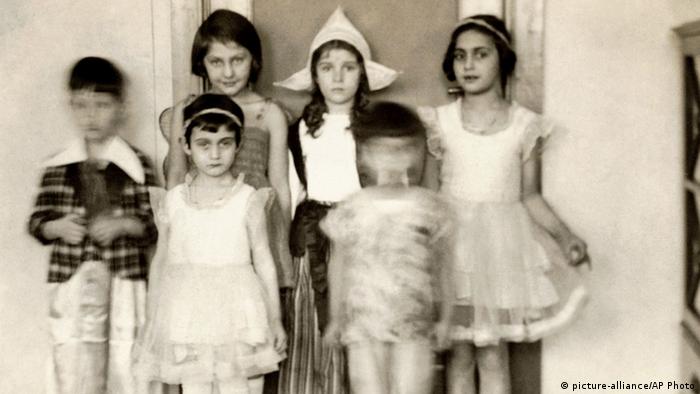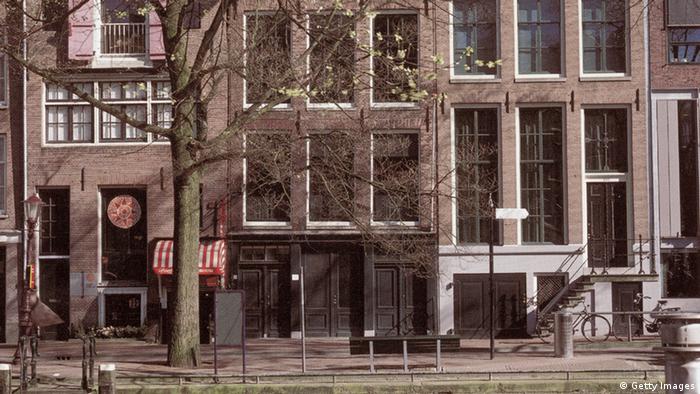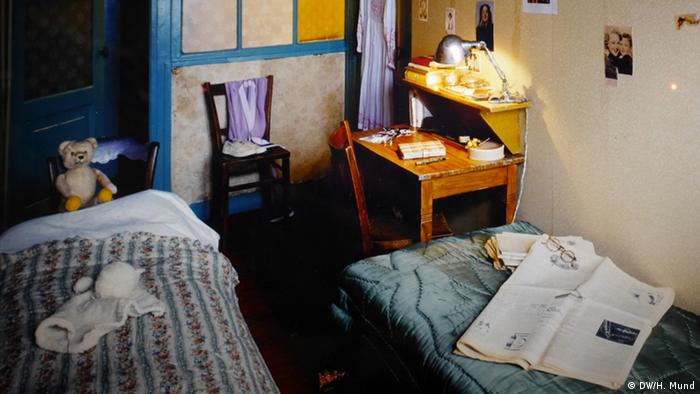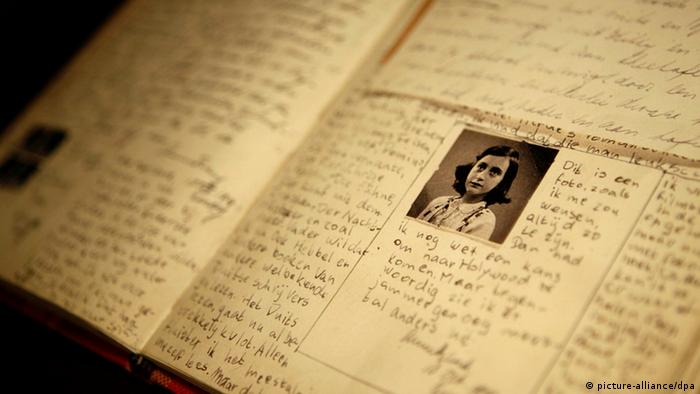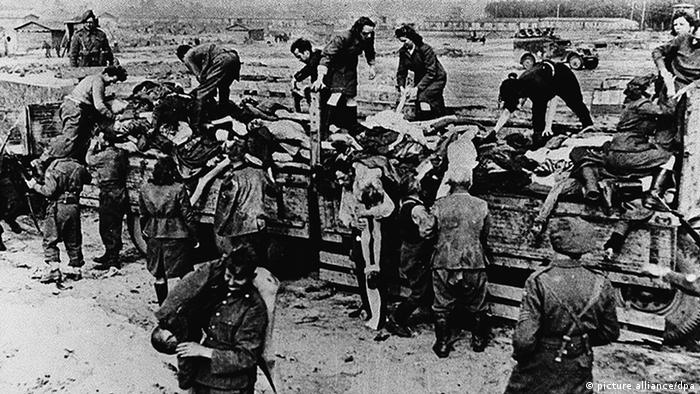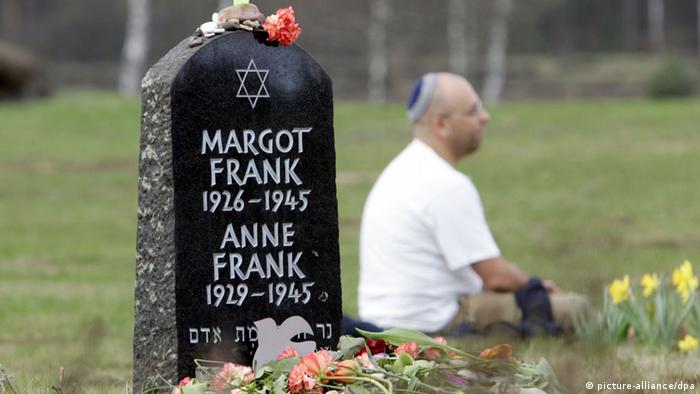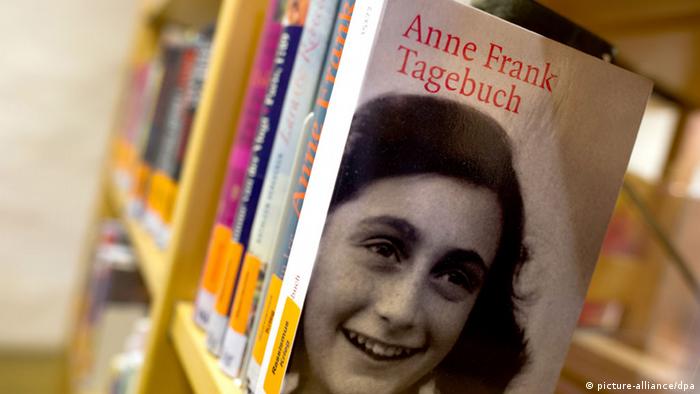Why still so many people – especially children and young people – interested in Anne Frank, tells Patrick Siegele, Director of the Anne Frank centre in Berlin, in the DW-Interview.

Deutsche Welle: Why is there an Anne Frank center in Berlin and not in Frankfurt, the birthplace of Anne Frank?
Patrick Siegele: In Frankfurt am Main there is also an educational site and here in the German capital to the centre as the German partner organisation of Anne Frank house in Amsterdam. That was a decision that was taken after the turn of the 1990s, when the Anne Frank house in Amsterdam, to support in Berlin, an organization that promotes the memory of Anne Frank and in the new länder.
The basic idea, the subject of Anne Frank and the work against anti-Semitism from the outset in the then so-called new Federal States to anchor was?
Exactly that was the original idea, and came from Amsterdam. Here, there was a citizens ‘ initiative from the people who had done after the turn together, people who have engaged in the broadest sense of the culture of remembrance. You brought the idea to establish the center as a fixed location.

In the center of Berlin, the Anne Frank centre is located – not to be overlooked by the big wall image
It was in the GDR no remembrance of Anne Frank?
It is often said that in the GDR because of the friendship of the Arab countries, there is no place for memories of the Jewish victims was. You can not say so sweeping. Anne Frank is a good example of this. The Premiere of the theatre play of 1956 “the diary of Anne Frank” took place in Dresden and West Berlin. There is also the Anne Frank schools and the Anne Frank gave brigades. Also in Eastern Germany as a culture of remembrance existed quite on Anne Frank, however, she and her family were drawn rather than resistance fighters and Jewish identity not so much in the fore. But you knew her, and her diary has also been in the GDR from 1957 and on several occasions moved.
What is the task of the Anne Frank center?
We summarize with the words, Remember and Engage. On the one hand, it comes to remember Anne Frank as a victim of Nazism and to do that, especially with children and young people. With touring exhibitions and the exhibition here in the house, with the Anne Frank day. On the other hand, the question is always: What is the story of Anne Frank has to do with the confrontation with national socialism and the Holocaust with us today?
What can tell Anne Frank to children and young people of today?
Anne Frank and her diary says very much about ourselves. The biographical Learning is so that Connections between Anne Frank and the young people themselves produce. As there are many similarities that can be found, the young people, similar dreams, similar problems in everyday life, similar thoughts, you might to the world. But the difference is that Anne Frank was denied as a Jew, your right to your life, that you have been discriminated against and had to dive in.
This is a very simple level at which young people can learn something. Anne Frank you need to know about her diary, and in our exhibitions you can see Anne, first of all, as a normal Teenager, as you are yourself. But your story shows, where hate, where anti-Semitism and exclusion can lead to, and that Anne Frank has just been reduced to only a part of their identity. She was not only the girl and the Teenager, the girlfriend and the good student – she was also Jewish and that was crucial in what happened to her, and that she had to finally die.

Exhibition in Berlin’s Anne Frank centre
This is something that can understand young people, perhaps even today, that we tend today to reduce people only on the basis of belonging to a particular group to the fact that prejudices and Stereotypes arise and we don’t see the people themselves. Anne Frank writes in her diary: “when will we be humans and not only Jews?”
The point with the Engage, the question is always: What can I do? Where are the rooms of my own action game? At that time the people have waited far too long. Many could not imagine where this could lead. As it was easier to defend themselves, or to make a difference, have done people little. And gradually, the action rooms game for the Persecuted, but also for the majority by the dictatorship, more and more restricted. And at some point it was too late.
Many young people and school classes come here?
Here alone in our exhibition we have each year about 10,000 young people, or people we serve in educational programs on-site. In total, we count approximately 35,000 visitors. The young people we reach through our traveling exhibitions, but still. The are also again a year between 15,000 and 20,000.
Of the visitors, about two-thirds are not German-speaking. We talk to our exhibition in Berlin, specifically families. There are few services for children and young people on the topic of national socialism and the Holocaust in Berlin. While there are many memorials and exhibitions, but aimed more at an adult audience. This makes our exhibitions attractive for families. And Anne Frank is internationally known. Her diary has been translated into 80 languages, and that is why very many people have heard of Anne Frank. Not all can go to Amsterdam to visit the Anne Frank house there.
Our exhibition is about Anne Frank, and she builds a bridge from history to the present day. It comes to questions of anti-Semitism today, to commemorate. What does it actually mean? We align ourselves with the exhibition, especially to the children and young people, to make yourself these questions, to participate, and to arrange for something here in the Museum. It is in the truest sense of the word, an interactive exhibition that encourages participation.
They say it covers the present. What comes back because of the young people?
Of course, the young people here, from also covers the story in the present. We also allow you to make the exhibitions will not be left in the wall alone. Sometimes we cooperate with the Museum educators, or with history teachers in order to contact the young people with such issues, or if you need help, to someone. Just on the subject of persecution and to escape the is often.
We have also issued Material, “escape in the life course”, in which we have to deal with the migration and fleeing history of the Frank family. Because far too few people know that Otto Frank has also worked very actively to leave Amsterdam after the German army had invaded in may 1940, the Netherlands. Although he and his wife had relatives in the USA and he had even worked for a time in New York, it failed to get a visa for his family. Among other things, because they were considered to be stateless persons – the Nazis have deprived the expatriate Jews in 1941 citizenship. Later, there was no American Consulate in the Netherlands.
All of this has meant that the family had no other choice than to dive. There may be similarities to stories of Escape from today. But there are always differences, and it is also very important, the particular Situation of the Frank family and the special of the Persecution of Jews back then, and to work with the youth.
You can’t compare everything, of Course, is a systematically organised genocide, as it was the Holocaust, where the state has worked with all its institutions, to destroy a minority not only in Germany, but later also in Europe, not to be equated with what is happening today, to exclusion, discrimination and persecution. To speak with young people about these differences, to show that we live in a constitutional democracy, and that it is important to preserve is also important.
You have already mentioned the Anne Frank day. What are the specific activities you plan to 90. Birthday of Anne Frank, June 12. June?
The Anne Frank day’s now already the third year. But this year, he has, of course, again of particular importance, because it is the 90. Birthday. We have about 150 to 200 schools nationwide participating in this year. This makes us very happy. You need to know, alone, there are hundreds of Anne Frank schools in Germany, which is the most common school name. And many of these schools are pleased that there is now a year, a concrete offer, because the schools like to a little to 12. June make.

Visitors in the permanent exhibition “All about Anne”
What is the offer?
This year, everything is of course under the banner of “90 years of Anne Frank”. The schools will receive a six-part poster display with large posters, which inform about the life story of Anne Frank and the can hang all of the schools involved in the auditorium or in the hallway. All of the students get the so-called “Anne Frank newspaper”, which informs about the life story of Anne Frank, then post cards, and bookmarks. The thought that young people should make themselves thoughts: Where are people discriminated against today because of their Religion or origin? Where I watch maybe self-exclusion? Why is it important to remind, today, on Anne Frank? What that says to me personally? The students can fill out these cards and the exhibition complement each other. More than 30,000 students will remember this year to Anne Frank.
How close is the partnership with the Anne Frank house in Amsterdam is?
We are officially the German partner organisation of the house in Amsterdam. The two Directors of the house to sit in the Executive Board and the shape on this level, all of our work. All of the larger and smaller projects, we make, in cooperation with the Anne Frank house. We have as a co-production between Berlin and Amsterdam Anne Frank House Network, for which we make every year an international Meeting. And, of course, our new exhibition “All about Anne” was a joint development with the Anne Frank house.
We have at this exhibition, but also very closely with the Anne Frank Fund in Basel, and worked together, the us has provided for our exhibition once images and objects. Even if we are the German partner organisation of the “house”, we also work together with the training centre in Frankfurt, the Anne Frank Fund in Basel and international partner organizations.
Patrick Siegele, born in 1974, has studied in Austria and the UK, German Philology and music science. Since 2014 he is Director of the Anne Frank center. From 2015 to 2017, he was the co-ordinator of the independent group of Experts on anti-Semitism (commissioned by the German Bundestag). Siegele is a member of the Advisory Board of the Alliance for democracy and tolerance, as well as in the Forum against racism.
The interview was conducted by Sabine Peschel.
